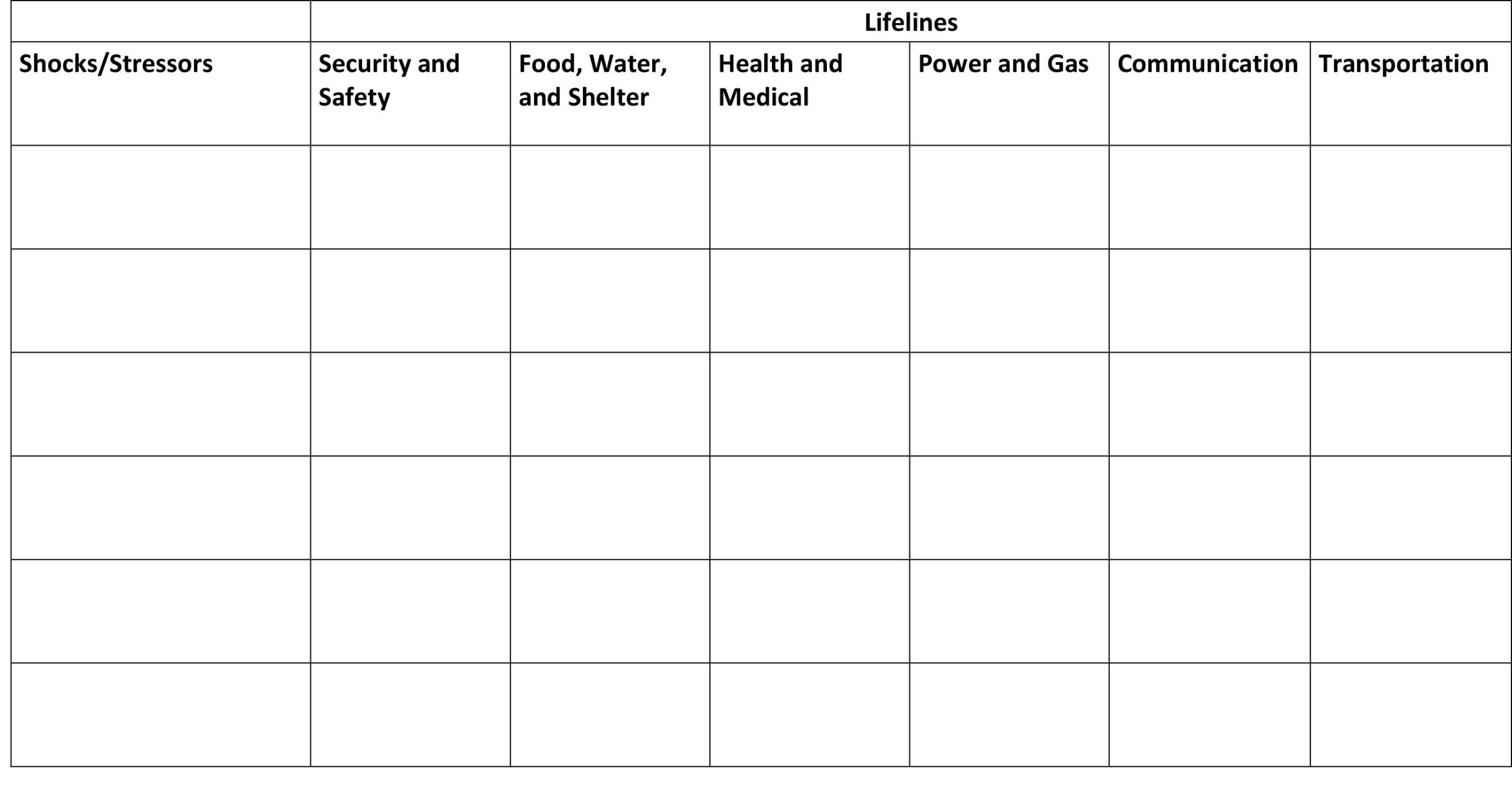Personal Risk Assessment
Use the chart below or download as a PDF to use as a tool to evaluate your ability to maintain lifelines. This serves as a focusing activity – rather than feeling overwhelmed by having to overhaul each lifeline’s preparedness plan, identify those lifelines that are most vulnerable and start by focusing attention towards creating plans for those areas.
Lifelines
During disasters it’s important that lifelines are able to be maintained to ensure wellbeing. During the first few hours of a disaster each community member should have a plan for how they will maintain lifelines on their own (or with assistance from their personal support networks) as part of their preparedness plan. As a disaster evolves, additional resources like shelters for humans, animals, and disaster assistance centers get put in place to support the community.
The following are personal lifelines that each community member should have a plan for maintaining:
- Safety and security – consider how you will maintain your safety and security. This could include things like having a plan for when you need to evacuate, how you plan to shelter in place, or other factors you want to consider to maintain your personal safety.
- Food, water, and shelter – consider how you will ensure you have food, water, and a place to stay. FEMA recommends that each person has up to 5 days of food and water on hand. For food assistance during non-disaster times, consider using local food resources.
- Health and medical – consider what you will need to maintain your health. This could include things like medications, assistive devices, eye glasses, dentures, or other resources that help you maintain your physical and mental wellbeing.
- Energy (power and fuel) – consider how you will power essential devices like medical equipment and transportation. This could include things like having a backup power source for devices, or making it a habit to have your vehicle or other transportation device fueled or charged to a certain amount of it’s capacity that you’re comfortable with (i.e. keeping vehicles fueled or charged to a quarter or half a tank at all times).
- Communications – consider how you will access communication – for information coming in, and outgoing communication. This could include things like making sure you’re signed up for emergency alerts, making sure you have a way to power communication devices, etc.
- Transportation – consider how you will mobilize if needed. This could include things like having a primary mode of transportation, and arranging back up options with friends, family, or neighbors.
Terminology:
- Shocks are unexpected things that happen in life – examples could include a wildfire, flood, loss of power, etc.
- Stressors are aspects of life that may create a sustained stress – examples could include housing concerns, incoming concerns, access and functional needs, medical concerns, lack of consistent transportation, etc.
Instructions:
- To complete this focusing activity, think of three shocks and three stressors that may impact you and write them in the blank shocks/stressors column. Once you’ve filled them in, mark an “x” in the boxes where shocks and stressors would impact your access to your lifelines.
- The lifeline columns that have the most “x”s are those that are most vulnerable, and give you an idea of what lifelines you want to focus your preparedness planning towards.

